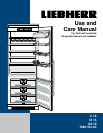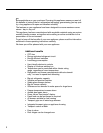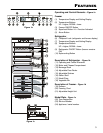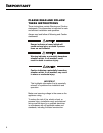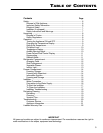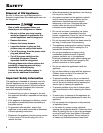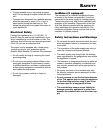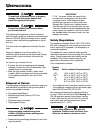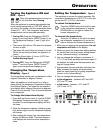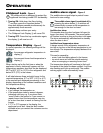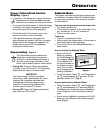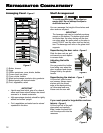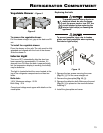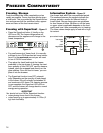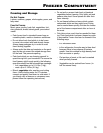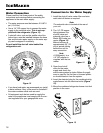
7
IceMaker (if equipped)
The icemaker for a combined refrigerator-freezer
is located in the freezer compartment. It must be
connected to the water supply to function properly.
These instructions only refer to the installation and
operation of the icemaker. Please refer to the Use
and Care Manual provided with the appliance for
other installation and operation instructions. The
combined refrigerator-freezer must be level for the
icemaker to function properly.
Safety Instructions and Warnings
• Do not make the water connection while the com-
bined refrigerator-freezer is connected to an elec-
trical outlet.
• The connection to the water supply may only be
made by a trained and licensed plumber.
• The water quality must comply with the drinking
water regulations for the geographical area where
the appliance is located.
• The icemaker is designed exclusively to make ice
cubes in quantities needed by a household and
may only be operated with water appropriate for
this purpose.
• All repairs and work on the icemaker may only
be done by customer service personnel or other
trained personnel.
• Do not consume or use the first three batches
of ice. This applies both to using the appliance
for the first time and also using it after it has
not been used for a long period of time.
• The manufacturer cannot accept liability for
damage caused by equipment or water lines
between the solenoid valve and the water sup-
ply.
• To avoid possible injury, only adjust an empty
shelf. Do not attempt to adjust a shelf with food
on it.
• To protect the refrigerator from possible damage,
allow the appliance to stand 1/2 to 1 hour in
place before turning the electricity on. This
allows the refrigerant and system lubrication to
reach equilibrium.
Electrical Safety
Connect this appliance to a 110-120 VAC, 15
amp (20 Amp for side-by-side installations) circuit
that is controlled by a circuit breaker or fuse. This
appliance should have its own separate grounded
circuit. Do not use an extension cord.
The power cord is equipped with a three-prong
(grounding) plug for your protection against
possible shock hazards. To maintain this protection:
• Do not modify the plug by removing the round
grounding prong.
• Do not use a two-prong adapter. Where a two-
prong wall receptacle is encountered, contact
a qualified electrician and have it replaced with
a three-prong receptacle in accordance with all
local codes and ordinances.
• Do not use a power cord that is frayed or
damaged.
saFety



